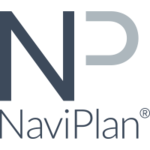Description

FactSet

Optionlogy
Comprehensive Overview: FactSet vs Optionlogy
FactSet Overview
a) Primary Functions and Target Markets
FactSet is a financial data and software company that provides integrated data and software solutions to the investment community. The primary functions of FactSet include:
- Data Aggregation and Analytics: It offers a comprehensive suite of financial data, including market data, company intelligence, and analytics tools.
- Portfolio Management: Investment professionals use FactSet for portfolio analysis, performance measurement, and risk management.
- Research: It aids analysts in conducting research by providing tools for financial modeling and predictive analysis.
- Trading Solutions: FactSet provides tools for pre-trade analytics, real-time data, and trade execution.
- Wealth Management Solutions: It serves wealth managers with tools for client relationship management, investment planning, and reporting.
The target market for FactSet includes:
- Asset managers
- Investment bankers
- Hedge funds
- Private equity firms
- Corporations
- Wealth management advisers
b) Market Share and User Base Comparison
FactSet is a major player in the financial data and analytics industry, competing with other giants like Bloomberg and Thomson Reuters. Its market share is significant within certain segments, such as portfolio management and investment analytics. FactSet’s user base is composed of global financial professionals across various sectors, though it is often regarded as smaller compared to Bloomberg, which has a broader market penetration particularly in trading and terminal services.
Optionlogy Overview
a) Primary Functions and Target Markets
Optionlogy is a financial technology company specializing in options trading analytics and education. The primary functions of Optionlogy include:
- Options Analytics: Provides tools for analyzing options trading strategies, including volatility assessments and theoretical pricing.
- Education: Offers educational resources and training programs for traders looking to improve their understanding of options markets.
- Strategy Development: Tools for backtesting and developing options trading strategies.
- Market Data: Supplies real-time data feeds specific to options markets.
The target market for Optionlogy includes:
- Individual traders
- Financial advisors
- Institutional investors involved in options trading
- Educators and learners in the financial domain focused on derivatives
b) Market Share and User Base Comparison
Optionlogy is more niche compared to FactSet, with a user base primarily focused on the options trading community. It does not have the broad market penetration that a comprehensive financial services provider like FactSet enjoys, but it is well-regarded within the options trading niche for its specialized tools and educational resources.
Key Differentiating Factors
c) Differentiating Factors Between FactSet and Optionlogy
-
Scope of Services:
- FactSet offers a wide array of financial data and software solutions for various segments of the financial services industry, while Optionlogy is specialized in options trading analytics and education.
-
Target Audience:
- FactSet appeals to a broad range of financial professionals, including those in asset management, banking, and corporate finance. Optionlogy caters specifically to options traders and those seeking education and analytics specific to options markets.
-
Breadth of Data:
- FactSet has extensive data coverage that spans equities, fixed income, indices, company financials, and more, whereas Optionlogy is focused primarily on options market data and strategies.
-
Educational Focus:
- While FactSet provides resources and training to utilize its platforms, Optionlogy has a pronounced focus on educating traders about options markets and strategies, alongside offering tools for practical application.
-
Technology and Tools:
- FactSet is known for its powerful analytics tools integrated into its platform, offering solutions like portfolio performance measurement and risk analysis. Optionlogy distinguishes itself with customized analytics tools for developing and backtesting options strategies.
In summary, FactSet provides comprehensive financial data services across multiple markets, while Optionlogy specializes in a niche market with specific targeting towards options trading analytics and education. The choice between the two would largely depend on the specific needs and industry focus of the user.
Contact Info

Year founded :
1978
Not Available
Not Available
United States
Not Available

Year founded :
Not Available
Not Available
Not Available
India
http://www.linkedin.com/company/optionlogy-com
Feature Similarity Breakdown: FactSet, Optionlogy
To provide a detailed feature similarity breakdown for FactSet and OptionLogy, we'll go through the core features, user interfaces, and unique features of each.
a) Core Features in Common
-
Financial Data and Analytics:
- Both platforms offer comprehensive financial data and analytics tools, enabling users to access, analyze, and interpret large volumes of market data.
-
Market Data Coverage:
- Access to global market data, including equities, fixed income, commodities, and derivatives.
-
Portfolio Analysis:
- Tools for portfolio management, risk assessment, and performance analytics.
-
Research Tools:
- Capabilities for conducting in-depth financial research, including charting, screening, and custom reports.
-
News and Information:
- Real-time news integration to keep users updated on market movements and corporate actions.
-
Customizability:
- Both platforms offer varying degrees of customizability to tailor the software to specific user needs, including dashboards and reporting tools.
b) User Interface Comparison
-
FactSet:
- FactSet typically offers a comprehensive and sophisticated interface that may have a steeper learning curve for new users. It is laden with data but highly respected for its intuitive layout after familiarization, making it favorable for professional analysts and institutional investors.
-
OptionLogy:
- OptionLogy is often praised for user-friendly and intuitive interfaces, potentially making it more accessible to retail investors or users without deep financial expertise. Its interface is designed to simplify complex financial data and enhance usability.
c) Unique Features
-
FactSet:
- Extensive Integration Capabilities: FactSet is known for its ability to integrate with several third-party applications and proprietary systems, providing seamless workflow solutions for large financial institutions.
- Consultative Support: FactSet provides personalized support and services, including strategic consulting for portfolio solutions that are often highlighted by users.
- Advanced Analytics and Modeling: FactSet is renowned for its sophisticated analytics infrastructure, offering robust data modeling and financial metrics calculations.
-
OptionLogy:
- Options Trading Tools: A specialized focus on options trading, providing specific tools and analytics geared towards options market analysis and strategy development.
- Reduced Complexity for Retail Market: Offers simplified features aimed at retail investors, such as trade simulators, educational resources, and potentially lower barriers to entry for individual users interested in exploring options markets.
- Pre-Built Strategies: Often includes pre-packaged trading strategies that can be especially helpful for novice traders wanting to understand and implement market plays.
Overall, while both FactSet and OptionLogy cater to the financial market needs, FactSet tends to target institutional users with a broad scope of features, whereas OptionLogy focuses more on options trading for both institutional and retail users, offering a streamlined user experience for derivatives markets.
Features

Market Data Solutions
Client Support
Portfolio Management
Analytics and Insights

User Dashboard
Performance Analytics
Collaboration Tools
Financial Planning
Security
Best Fit Use Cases: FactSet, Optionlogy
FactSet
a) Best Fit Use Cases for FactSet
- Investment Research and Management: FactSet is ideal for asset managers, hedge funds, and investment banks that require comprehensive data and analytics for investment decisions.
- Corporate Finance and M&A: Companies involved in mergers and acquisitions use FactSet for due diligence, financial modeling, and valuation analysis.
- Equity Research: Analysts and researchers benefit from FactSet’s extensive market data, research tools, and financial data to perform in-depth company and sector analysis.
- Risk Management: FactSet provides risk analytics that help financial institutions in identifying and mitigating financial risks.
- Portfolio Management: Portfolio managers use FactSet for its robust portfolio analysis and performance measurement tools.
Optionlogy
b) Preferred Use Cases for Optionlogy
- Options Trading and Strategy Development: Optionlogy is particularly suited for individual traders, proprietary trading firms, and advisors focused on options trading.
- Risk Analysis in Options Markets: Traders and financial analysts use Optionlogy for options pricing models, volatility analysis, and risk metrics.
- Educational and Training Purposes: Institutions offering courses related to options trading may use Optionlogy as a practical tool for learning and applying options strategies.
- Technical Analysis: Traders relying on technical analysis can benefit from the various charting and analysis tools available in Optionlogy for options markets.
Industry Verticals and Company Sizes
-
FactSet:
- Industry Verticals: Primarily serves financial services, including investment management, banking, and insurance. Also used in corporate finance departments across various industries.
- Company Size: FactSet caters to both large enterprises, such as global banks and institutional investors, as well as mid-sized firms seeking robust financial data and analytical tools.
-
Optionlogy:
- Industry Verticals: Mainly targets retail trading, financial institutions, and educational entities focusing on derivative markets.
- Company Size: While it is used by larger trading firms for its specialty in options analytics, it is also accessible to smaller firms and individual traders due to its focus on options-specific tools.
Both FactSet and Optionlogy serve distinct purposes and markets, with FactSet being a more comprehensive solution across various financial analyses and Optionlogy focusing specifically on derivatives and options markets.
Pricing

Pricing Not Available

Pricing Not Available
Metrics History
Metrics History
Comparing teamSize across companies
Conclusion & Final Verdict: FactSet vs Optionlogy
Conclusion and Final Verdict for FactSet vs. Optionlogy
When evaluating financial data and analytics software like FactSet and Optionlogy, it's essential to consider various factors such as features, cost, ease of use, support, integration capabilities, and the specific needs of the user. Here is a comprehensive conclusion and verdict for both products:
a) Considering All Factors, Which Product Offers the Best Overall Value?
Best Overall Value: FactSet
FactSet tends to offer the best overall value because it provides a comprehensive suite of tools that cater to a wide range of financial analysis needs. It combines robust market data, analytics, and tools that are vital for asset managers, analysts, and financial advisors. Despite being more expensive, its exhaustive features justify the cost for professionals seeking an all-in-one solution.
b) Pros and Cons of Choosing Each Product
FactSet:
- Pros:
- Comprehensive Data Coverage: Extensive financial datasets including historical and real-time market data.
- Advanced Analytics: Powerful tools for financial modeling, risk management, and portfolio analysis.
- Integration: Easily integrates with other financial software and platforms, enhancing productivity.
- User Support: Excellent customer service and support with comprehensive training resources.
- Cons:
- Cost: FactSet can be significantly expensive, which might not be suitable for smaller firms or individual traders.
- Complexity: The breadth of tools and data can be overwhelming for new users or those with limited experience.
Optionlogy:
- Pros:
- Affordability: More cost-effective, making it accessible for individual traders or smaller firms focused on options trading.
- Ease of Use: Easier for beginners or those primarily focused on options trading; user-friendly interface.
- Specialization: Offers specialized tools and analytics specific to options strategies that cater to niche markets.
- Cons:
- Limited Scope: Primarily focused on options, which can be limiting for users requiring a broader range of financial analyses.
- Integration Challenges: May not integrate as seamlessly with other financial platforms compared to FactSet.
c) Specific Recommendations for Users Deciding Between FactSet and Optionlogy
-
Evaluate Your Needs:
- Broad Financial Analysis Needs: Choose FactSet if you require a comprehensive financial analysis tool covering multiple asset classes, robust data sets, and advanced analytics.
- Focus on Options Trading: Opt for Optionlogy if your primary need is options trading and you’re looking for affordable, specialized tools without the extra costs associated with broader data coverage.
-
Consider Your Budget:
- If budget constraints are a significant consideration, especially for smaller firms or individual traders, Optionlogy may be more appealing.
-
Think About Integration:
- For users who need to integrate their analytics tools with other software or rely on a seamless network of data sources, FactSet’s integration capabilities make it the preferable choice.
-
Assess Your Experience Level:
- Experienced financial analysts and asset managers might find FactSet more beneficial due to its advanced features, while beginners or those specifically trading options might prefer the simplicity and specialization of Optionlogy.
In conclusion, while FactSet provides a more comprehensive solution for a broad array of financial needs, Optionlogy offers a cost-effective, specialized alternative for those focused on options trading. Users should choose based on their specific financial analysis needs, budget, ease of use, and required integrations.




